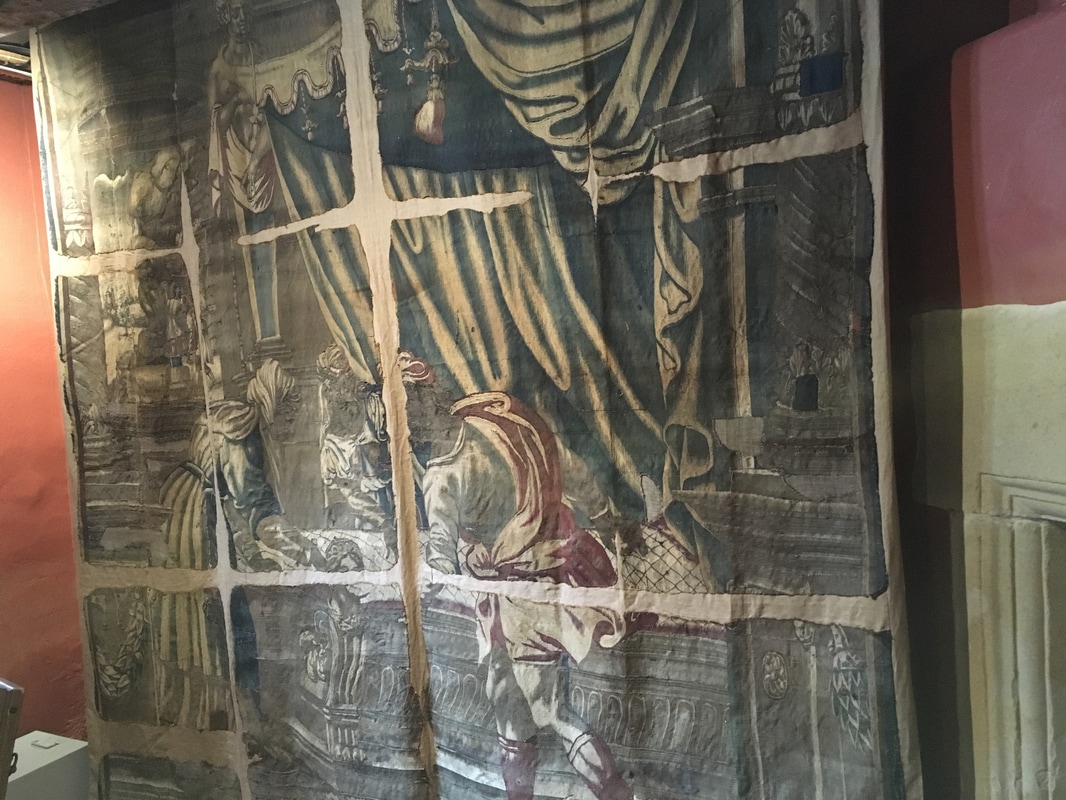|
Before Woolfest Mum and I took a trip back over to the Peak District. We lived on the edge of the National Park for 25 years, but we've now been away for long enough that it's like being a visitor, and you notice all the things you take for granted. We stayed with my Aunty who still lives on the edge of the Park, we'd gone over to visit the new RHS Chatsworth garden show (which was a big disappointment), but the day before we went to Haddon Hall. My highlight of the hall was a small room with some tapestry hangings. The wonderful thing is that you could get up close and personal to them. They're not behind glass, so you can really see the detail of how they were made. I only had my phone with me, and the light levels were low to preserve them, so the quality isn't great... but you can see how certain areas were woven using silk to catch the light and act as highlights. You could also see where repairs had been carried out at various stages, such as the red darn on the right. The colours have lost their vibrancy, the yellow in particular has faded, hence the number of blue leaves... They would have been green by using a blue dye like woad, that was then over-dyed with a yellow dye plant such as Weld. And here's the real tragedy. These tapestries survived because they were forgotten about. Haddon Hall wasn't lived in for nearly 200 years. In the early 1700's the family abandoned it, choosing to live in a more comfortable, modern property. They were bundled up, and put in to a tower for storage, and there they stayed until the 1920's when the then Duke started restoring the hall. They were put in to a stable block for storage, before being taken to be restored, and made ready for rehanging. But tragically one evening fire broke out. Many tapestries were nearly complete destroyed. Thos that survived were now in pieces, they all have burn patterns along the fold lines. Some were salvaged, and stitched on to backing cloths, and are now on display again. On the top photo the finer threads are from the more modern restoration. I'm not a textile historian, but I did love trying to work out how these were made. To my eyes it look like they were woven sideways, with warp thread running across the fabric when they're hung for display. They're a very weft faced structure, with the warp being completely hidden.
They were made by expert craftsmen, a drawing would be produced, and taken round for the nobility to choose from. So in the case of some of the Haddon Hall tapestries other examples are in royal collections in other European countries like Sweden. Comments are closed.
|
Archives
January 2024
Categories
All
|
Hilltop CloudHilltop Cloud- Spin Different
Beautiful fibre you'll love to work with. Established 2011 VAT Reg- 209 4066 19 Dugoed Bach, Mallwyd, Machynlleth,
Powys, SY20 9HR |






 RSS Feed
RSS Feed


